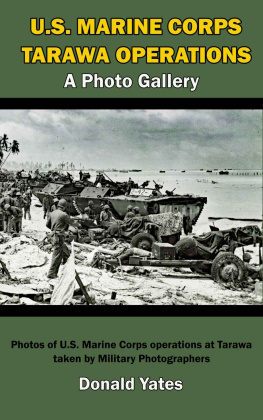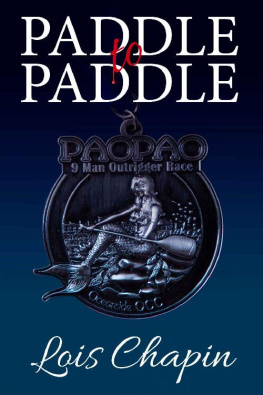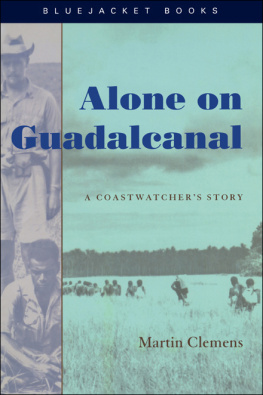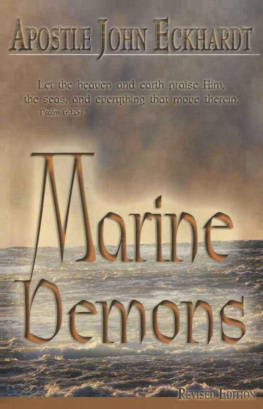Top of the Ladder:
Marine Operations in the
Northern Solomons
Table of Contents
by Captain John C. Chapin, USMCR (Ret)
A ssault landings began for the men in the blackness of the early hours of the morning. On 1 November 1943, the troops of the 3d Marine Division were awakened before 0400, went to General Quarters at 0500, ate a tense breakfast, and then stood by for the decisive command, Land the Landing Force. All around them the preinvasion bombardment thundered, as the accompanying destroyers poured their 5-inch shells into the target areas, and spotters in aircraft helped to adjust the fire.
As the sun rose on a bright, clear day, the word came at 0710 for the first LCVPs (Landing Craft, Vehicle and Personnel) to pull away from their transport ships and head for the shore, a 5,000-yard run across Empress Augusta Bay to the beaches of an island called Bougainville.
Almost 7,500 Marines were entering their LCVPs (with Coast Guard crew and coxswains) for an assault on 12 color-coded beaches. Eleven of these extended west from Cape Torokina for 8,000 yards to the Koromokina Lagoon. The 12th was on Puruata Island just offshore from the beaches. The six beaches on the right were assigned to Colonel George W. McHenrys 3d Marines and Lieutenant Colonel Alan Shapleys 2d Raider Regiment (less one battalion). The five on the left and Puruata Island were the objectives of Colonel Edward A. Craigs 9th Marines and Lieutenant Colonel Fred D. Beans 3d Raider Battalion.

As the men headed for shore, 31 Marine torpedo and scout bombers, covered by fighters, came screaming in from their base at Munda, bombing and strafing to give the beaches a final plastering. At 0726, the first wave touched ground, four minutes ahead of the official H-Hour. As the other waves came in, it was immediately apparent that there was serious trouble in two ways. A high surf was tossing the LCVPs and LCMs (Landing Craft, Medium) around, and they were landing on the wrong beaches, broaching, and smashing into each other in the big waves. By the middle of the morning, 64 LCVPs and 22 LCMs were hulks littering the beaches. Three of the designated beaches had to be abandoned as unusable.

Department of Defense Photo (USMC) 62751
Marine riflemen keep their heads down as they get closer to the assault beach on D-Day.
Major Donald M. Schmuck, commanding a company in the 3d Marines, later recalled how, in the mad confusion of the beachhead, his company was landed in the midst of heavy gunfire in the middle of another battalions zone on the beach of Torokina. Running his company on the double through the other battalion and the 2d Raiders zone across inlets and swamp, Major Schmuck got his men to the right flank of his own battalion where they were to have landed originally. His surprised battalion commander, Lieutenant Colonel Hector de Zayas, stared at the bedraggled new arrivals exclaiming, Where have you been? Major Schmuck pointed back to Cape Torokina and replied, Ask the Navy!

As seen from a beached landing craft, these Marines are under fire while wading in the last few yards to the beach.
The other trouble came from the Japanese defenders. While the 9th Marines on the left landed unopposed, the 3d Marines on the right met fierce opposition, a deadly crossfire of machine gun and artillery fire. One Japanese 75mm gun, sited on Cape Torokina, was sending heavy enfilade fire against the incoming landing waves. It smashed 14 boats and caused many casualties. The boat group commanders craft took a direct hit, causing the following boat waves to become disorganized and confused. Machine gun and rifle fire, with 90mm mortar bursts added, covered the shoreline. Companies landed in the wrong places. Dense underbrush, coming right down to the beaches, shrouded the defenders in their 25 bunkers and numerous rifle pits. The commanding officer of the 1st Battalion, 3d Marines, Major Leonard M. Spike Mason, was wounded and had to be evacuated, but not before he shouted to his men, Get the hell in there and fight! Nearby, the executive officer of the 2d Raider Regiment, Lieutenant Colonel Joseph J. McCaffery, was directing an assault when he was severely wounded. He died that night.

Department of Defense Photo (USMC)
Sgt Robert A. Owens was posthumously awarded the Medal of Honor.
In spite of the chaos, the intensive training of the Marines took hold. Individuals and small groups moved in to assault the enemy, reducing bunker after bunker, dropping grenades down their ventilators. For an hour, the situation was in doubt.
The fierce combat led to a wry comment by one captain, Henry Applington II, comparing steak and eggs served on white tablecloths by stewards and three and a half hours and a short boat ride later rolling in a ditch trying to kill another human being with a knife.
The devastating fire from the 75mm cannon on Cape Torokina was finally silenced when Sergeant Robert A. Owens, crept up to its bunker, and although wounded, charged in and killed the gun crew and the occupants of the bunker before he himself was killed. A posthumous Medal of Honor was awarded to him for this heroic action which was so crucial to the landing.
Meanwhile, on Puruata Island, just offshore of the landing beaches, the noise was intense; a well-dug-in contingent of Japanese offered stiff resistance to a reinforced company of the 3d Battalion, 2d Raiders. It was midafternoon of D plus one before the defenders in pill boxes, rifle pits, and trees were subdued, and then some of them got away to fight another day. A two-pronged sweep and mop-up by the raiders on D plus 2 found 29 enemy dead of the 70 Japanese estimated to have been on that little island. The raiders lost five killed and 32 wounded.




















